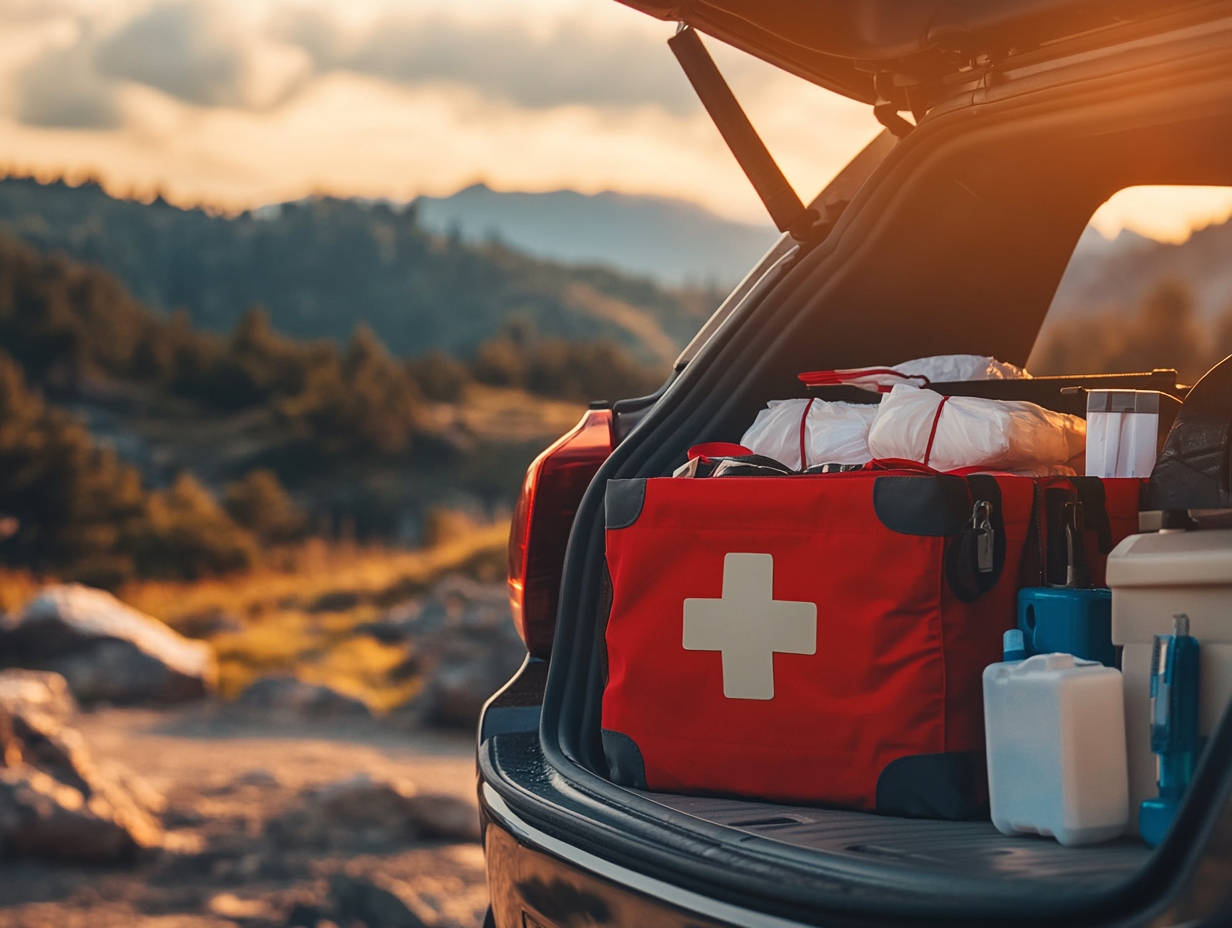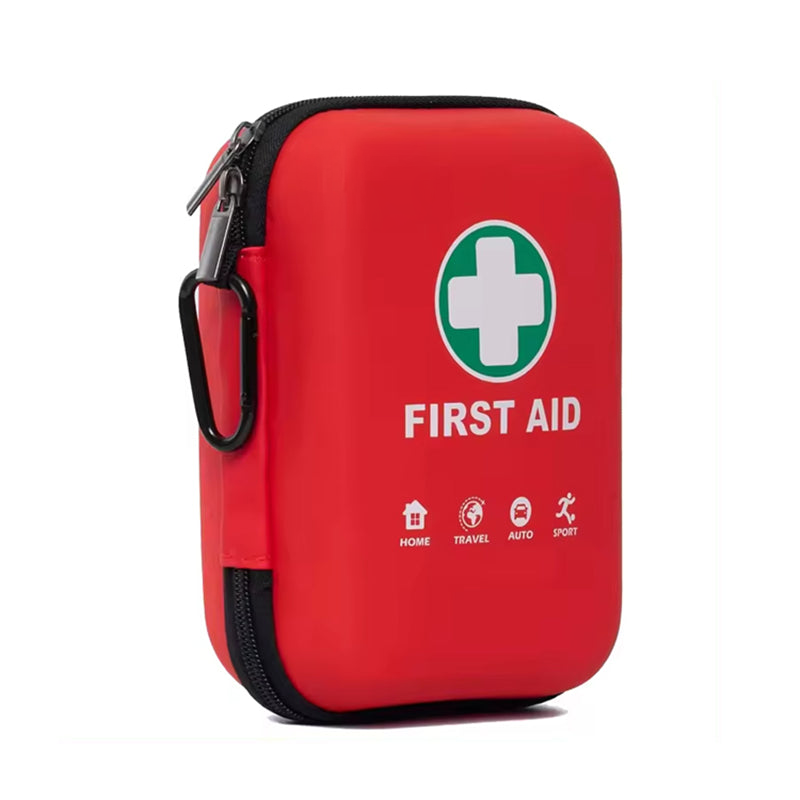Car First Aid Kit and the Responsibility of Car Owners

In modern society, cars have long transcended their role as mere transportation tools, becoming an indispensable part of people's lives.
However, with convenience comes potential risk: traffic accidents, sudden illnesses, and other emergencies can occur at any moment. As car owners, equipping a car first aid kit not only ensures personal safety but also demonstrates a commitment to the lives of others.
This sense of responsibility enhances driving safety and reflects the car owner's contribution to social harmony and a spirit of mutual aid.
This article will explore the relationship between the car first aid kit and car owners' responsibilities from various perspectives, discussing its legal basis, moral significance, and social value.
Introduction: Why Do Car Owners Have a Responsibility to Equip Their Cars with a First Aid Kit?
Imagine this scenario: You’re driving on the highway, and suddenly, a rear-end collision occurs ahead of you. A person lies on the roadside, bleeding profusely, while the ambulance has not yet arrived.
If you have a first aid kit in your car, you can quickly apply a bandage to stop the bleeding, or even use the tools in the kit to perform basic wound care, buying precious time for professional help.
Alternatively, if a family member suddenly experiences heart problems, the first aid equipment in your car could provide vital support in a critical moment.
These situations remind us that a car first aid kit is not just a "shield" for personal safety but also a "lifeline" to assist others in emergencies.
The responsibility of car owners to equip their cars with first aid kits arises from two main aspects: self-protection and social care. On one hand, car owners need to be prepared for possible accidents while driving; on the other hand, as members of society, car owners have an obligation to help others within their capabilities.
This sense of responsibility reflects modern society’s dual expectations of car owners’ safety awareness and social commitment.
Legal and Moral Responsibilities: Legal Requirements and Societal Expectations of Car Owners to Carry a First Aid Kit
Legal Requirements: Mandatory First Aid Kits
Around the world, many countries and regions have made the importance of car first aid kits clear through legislation. For example:
- Germany: According to the German Road Traffic Regulations (StVO), every motor vehicle must be equipped with a first aid kit that meets the DIN 13164 standard, including bandages, disinfectants, and emergency blankets. Failure to carry the kit can result in fines or even failure to pass vehicle inspections.
- Austria: Austrian law also mandates the carrying of a first aid kit, and requires regular checks to ensure the medical supplies and tools are in working order.
- China: While China has not enacted nationwide mandatory regulations, the "Road Traffic Safety Law" emphasizes the driver’s obligation to assist the injured after an accident, and carrying a first aid kit is undoubtedly an effective way to fulfill this duty.
These laws share a common goal: they focus not only on the safety of the car owner but also encourage car owners to become "first responders" in emergencies, contributing to public safety.
Moral Responsibility and Societal Expectations
The law sets the minimum standard, but moral and societal expectations elevate the responsibility of car owners. As the number of vehicles increases, so does the frequency of traffic accidents.
In China, for example, the annual death toll from traffic accidents reaches tens of thousands, and many lives are lost while waiting for rescue due to a lack of immediate medical attention. In this context, society’s expectations of car owners are shifting from "passive compliance" to "active responsibility."
- Raising Public Safety Awareness: People increasingly recognize that public safety is not just the responsibility of governments and professional organizations; everyone should participate. Car owners carrying first aid kits is seen as a positive social behavior.
- Moral Duty: When others are in distress, if a car owner can lend a helping hand, this behavior not only aligns with the traditional virtue of "helping others" but also resonates with the modern civic sense of responsibility.
Therefore, the legal and moral responsibilities together form the framework for the car owner’s duty to carry a first aid kit: the law provides compulsory constraints, while ethics imbue it with deeper social significance.
Enhancing Social Responsibility: How Carrying a First Aid Kit Demonstrates a Car Owner’s Social Responsibility
Equipping a car with a first aid kit is not just a material preparation; it is a reflection of attitude and capability. It showcases the car owner’s social responsibility on several levels:
1. Prioritizing Personal Safety: A Sense of Self-Protection
Driving a car inherently involves risks. Whether it’s fatigue driving on a long trip or a minor collision on urban roads, accidents can happen at any time.
Basic items in a first aid kit—such as band-aids, gauze, disinfecting alcohol, or even a portable defibrillator (AED)—can be invaluable in critical moments.
For instance, a car owner injured by a tire blowout in a remote area could use the bandages in their first aid kit to stop the bleeding, preventing further harm.
This self-protection responsibility is often the primary motivation for car owners to carry a first aid kit.
2. Caring for Others: Becoming a "Lifesaver" in Emergencies
In traffic accidents, the car owner is often the first witness. During the "golden hour" before the arrival of emergency services, the actions of the car owner could determine whether a life is saved. For example, in a 2019 highway accident, a passing car owner used the first aid kit in their car to stop the bleeding and perform CPR, ultimately saving a life. This act not only shows respect for another person’s life but also highlights the car owner’s social responsibility.
3. Improving First Aid Skills: From Carrying to Proficient Use
Carrying a first aid kit is only the first step; learning how to use it is equally important. Many car owners actively take first aid training after purchasing a kit, learning basic skills such as wound care, bandaging, and CPR.
This process not only enhances the car owner’s ability to handle emergencies but also strengthens their safety awareness.
For example, a car owner who frequently goes on road trips mentioned that since learning first aid skills, he could calmly manage a friend’s asthma attack, preventing serious consequences.
4. Promoting a Culture of Mutual Aid: Influencing Others Through Action
Car owners carrying first aid kits set an example for others. When other drivers or pedestrians witness the car owner offering assistance in an emergency, they are inspired to imitate this behavior.
This ripple effect helps cultivate a culture of mutual aid in society. For instance, some communities have started organizing "Car Owner First Aid Training Days," encouraging more people to join this initiative.
Conclusion: Car First Aid Kits as Part of the Car Owner’s Responsibility, Enhancing Driving Safety and Social Trust
While small, a car first aid kit carries dual responsibility for the car owner—toward themselves and others.
It is not only a "safety insurance" for driving but also a "bridge of social trust." By equipping a first aid kit, car owners can play a positive role in the following ways:
- Enhancing Driving Safety: A first aid kit provides emergency protection for the car owner and passengers, reducing the risk of injury in accidents.
- Building Social Trust: Car owners who take responsibility strengthen trust among society’s members, making people believe that help is always available in times of crisis.
- Promoting Social Harmony: The car owner’s good deed can reduce casualties from traffic accidents, creating a safer and warmer social environment.
Thus, carrying a first aid kit is not only a legal and moral obligation but also a vital way for car owners to demonstrate their social responsibility and safety awareness.
As a car owner, perhaps it’s time to check if your vehicle’s first aid kit is complete and up to date. Let’s start now by integrating this responsibility into our daily lives and contribute to the safety of ourselves, others, and society.
